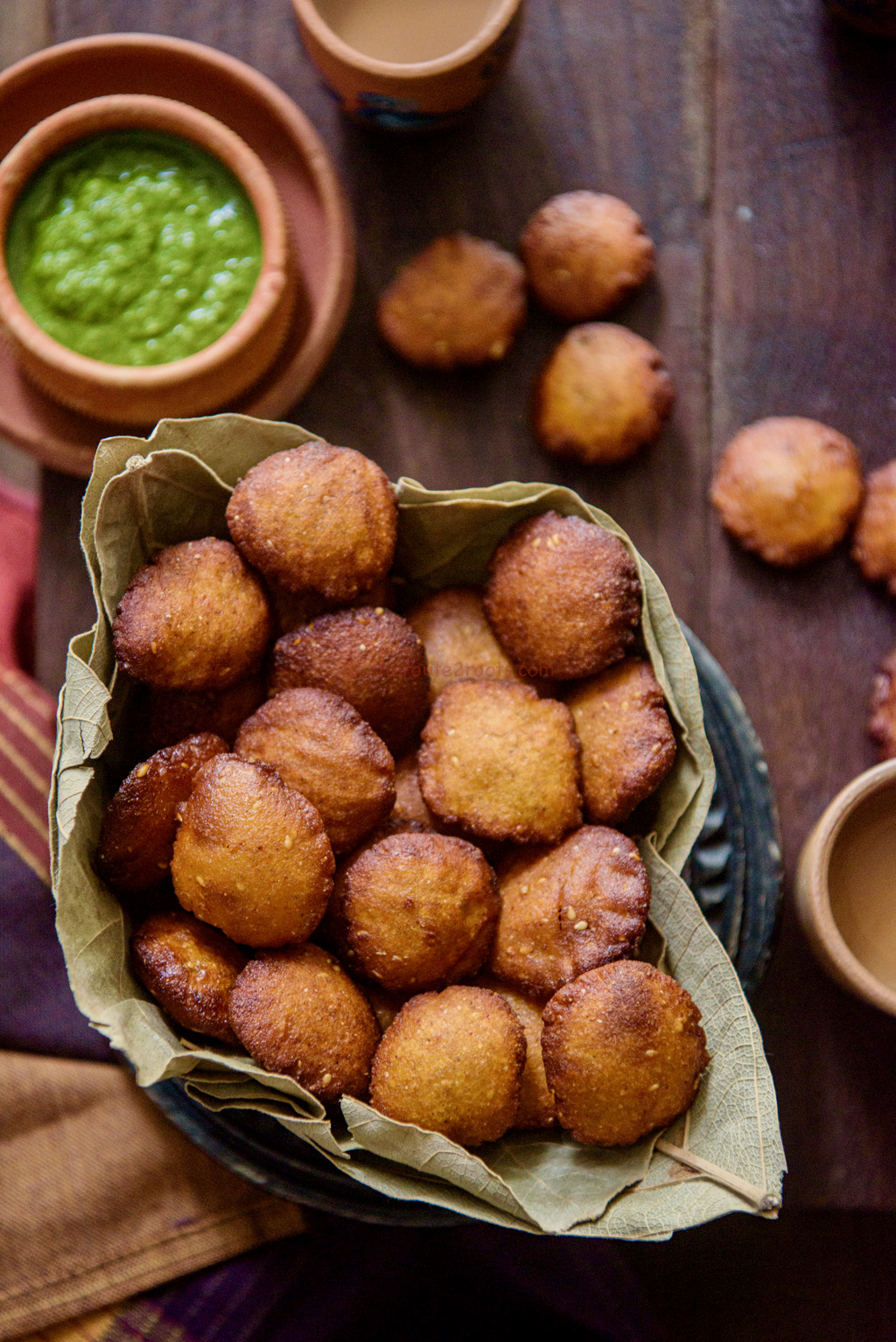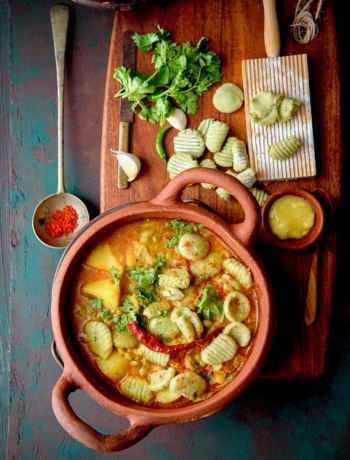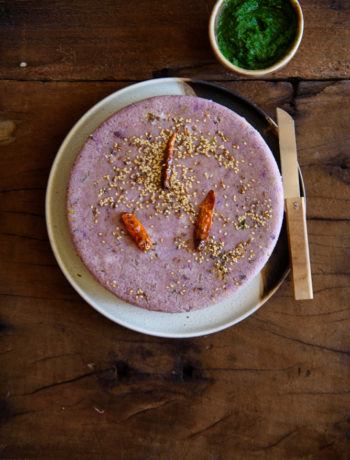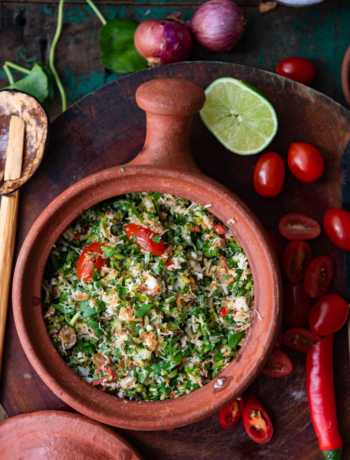Vada ane Cha (Vada and Chai) – a jugalbandi I found hard to comprehend until few years back. Instead, Bhajiya or Gota was my preferred choice of fritters to welcome the chill rains and the wet-wet weather brings with it ( a rarity these days). Since these puffed, deep-fried discs failed to charm me, I maintained my distance. No wonder; it came as a surprise when I learnt that Gujarati cuisine holds a spectrum of this millet and grain vada I mention here. It is a preparation that has received lots of love from communities across Gujarat, as each region has its concoction of millet+grain mix. bajra+wheat, maize+wheat, jowar+wheat or multi-grain – the combinations can be anyone’s fancy. And it is not just about the flour mix! The key is to strike the balance of flavours and texture. The vada are never melt in the mouth, but they also should not be chewy. They are best eaten the next day and stay well for few days (no wonder they make perfect travel partners with Sukhdi and Thepla).To aid the digestion of millets the dough is allowed to ferment. The sourness lent by fermentation is balanced with jaggery. There is also a combination of red and green chilli for colour and heat. And if all these complex flavours manage to strike a perfect chord, the aroma of hand-patted vada frying in groundnut oil will travel across the neighbourhood, requiring you to share it with a cup of Chai (to dunk the vada) and lots of Vato na Vada (Gujju for gossip).
The links to some more posts on Vada to be found on this blog are listed below:
https://www.theroute2roots.com/makai-na-vada/
https://www.theroute2roots.com/ghaayda-the-dhokla-flour-vada-from-kutchh/

Saat Dhaan na Vada
Ingredients
- To make the Vada flour mix
- 1 cup rice, raw, small grained
- 1 cup bajra grains
- 1 cup jowar grains
- 1/4 cup Chana dal
- 1/4 cup Toor Dal
- 1/4 cup Urad Dal
- 1/4 cup Moong dal
- 1/4 cup whole wheat
- Other ingredients
- 1 cup sour buttermilk
- 1 teaspoon ginger paste
- 1 teaspoon green chilli paste
- 1 teaspoon garlic paste (optional)
- 2 tablespoon oil, to be added to flour
- 2 teaspoons jaggery (more or less to balance the sourness fermentation brings)
- 1/2 teaspoon turmeric
- 1 teaspoon red chilli powder (use to your heat tolerance)
- 1/4 teaspoon asafoetida/hing
- 1 tablespoon sesame seeds
- a pinch of ajwain seeds (optional)
- salt to taste
- oil for deep frying (groundnut oil preferred)
Instructions
To make the flour:
In a heavy bottom iron kadai bring together the whole grains mentioned for the Vada flour. Dry roast the grains on a very low flame for 7-8 minutes. Ensure that you are stirring the grains all the time.
Once the grains have cooled down, grind them in a mixer-grinder to coarse textured flour (like fine semolina). If you have a flour mill at home choose to mill it in the same.
When you wish to make the Vada begin by soaking the dough to ferment.
4-5 hours ( for place like Ahmedabad where temperature remains 35 degrees C and above) before you wish to fry the Vada prepare the dough. Take the flour in a large mixing bowl. Add 2-3 tablespoons of oil and mix it well into the flour. Add sour buttermilk to bind the flour into stiff dough (you will have to eye ball the quantity and grains soak differently).
Cover and allow it to ferment for 4-5 hours.
Once the dough has fermented it will feel light to touch.
Add the ginger+green chilli+garlic paste, turmeric powder, red chilli powder, jaggery, sesame seeds, hing, ajwain seeds and season with salt. Taste the dough to balance the flavours.
Allow the dough to rest for 10 minutes.
Prepare the work station to pat and fry the vada in successive order.
Heat oil in a kadai. Keep the flame to medium.
Spread a wet cheese/muslin cloth over wooden stool.
Make dough balls not bigger than 1.25 inch (calamansi lime sized).
Place the dough ball on the wet cheese cloth and pat it to spread into roughy 1.5 inch disc.
Take some milk+water in a small bowl to moisten your fingers to ease the patting. Moist fingers will prevent the dough from sticking to your fingers.
Lift the cheese cloth to help you upturn the vada over your fingers and carefully place it in hot oil.
Depending on the size of the kadai and your speed of patting the vada, fry 4-5 vada at on go.
Keep the flame medium to help the vada cook from inside and take up a beautiful light brown colour from the outside.
Repeat till you have finished the dough.
Serve the Vada hot with chai and chutney.
These gather more flavours on the day after. So feel free to serve cold vada as snack.
Notes
I keep the Saat Dhaan Vada flour mix ready to make small batches. Once you have got an hang of the flavours feel free to adjust the spices and green masala (garlic, ginger, chillies) according to your taste. The consistency of dough should be soft and not loose (Between paratha dough and idli batter).





No Comments